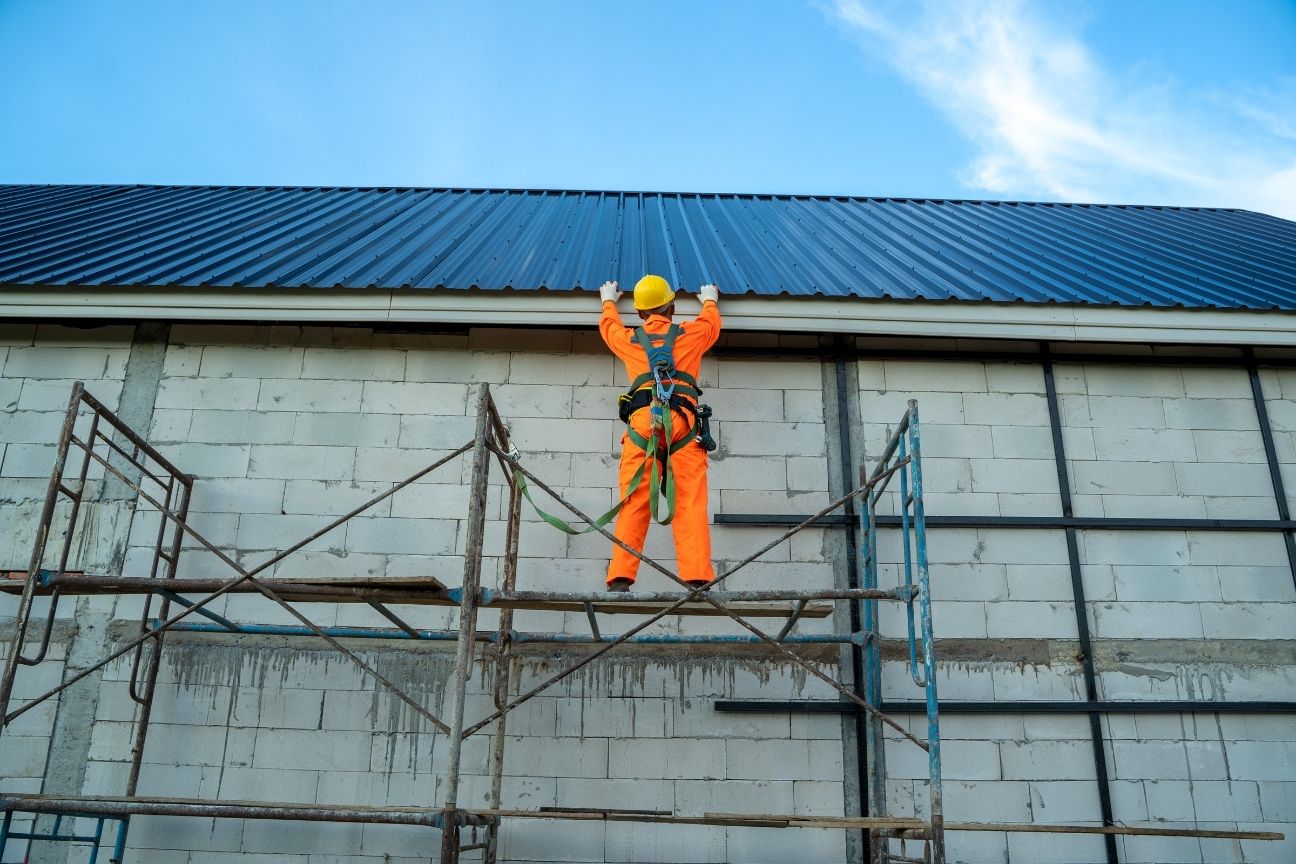Concrete structures are the backbone of modern infrastructure, essential for everything from bridges to skyscrapers. However, successful construction requires a solid understanding of best practices and meticulous execution. Here’s a detailed outline to guide you through the ins and outs of concrete structure construction, ensuring you achieve durability, safety, and efficiency.
Introduction
Concrete structures play a crucial role in our daily lives. From towering skyscrapers to sturdy bridges, these constructions shape our environment. Without a sound understanding of concrete construction best practices, projects can quickly go awry. This article provides essential insights into creating durable and effective concrete structures.
In civil construction, adhering to best practices is vital. Not only does it ensure structural integrity, but it also improves safety and efficiency. Each tip in this guide aims to help you navigate the concrete construction process smoothly. You’ll learn about everything from basic principles to maintenance tips.
By the end of this article, you will possess the knowledge needed to tackle any concrete construction project. Whether you’re a seasoned professional or a newcomer to the field, these guidelines will enhance your approach. Dive in and discover how to make your concrete structures stand the test of time!
Understand the Basics of Concrete
Concrete is one of the most widely used construction materials today. Its composition and properties dictate how it performs in various structures. Understanding these basics is crucial for anyone involved in concrete structure construction.
Composition of Concrete
Concrete is a mixture of cement, water, aggregates, and sometimes additives. Each ingredient plays a vital role in the overall performance.
- Cement: This powder acts as the binder. When mixed with water, it forms a paste that hardens, holding everything together.
- Water: It activates the cement. The ratio of water to cement affects the final strength and durability. Too much water can weaken the structure.
- Aggregates: These are the coarse and fine materials, like sand, gravel, or crushed stone. They provide bulk and stability, influencing the overall strength and weight.
- Additives: Optional materials, such as plasticizers or retarders, can enhance specific properties, like workability or setting time.
Types of Concrete
Knowing the different types of concrete helps you choose the right one for your project.
- Reinforced Concrete: Embedded with steel bars or fibers, this type improves tensile strength, making it ideal for structures subjected to tension.
- Pre-cast Concrete: Manufactured in controlled environments, these components are later assembled on-site. They offer consistency and speed in construction.
- High-Strength Concrete: Formulated for additional durability, high-strength concrete is suited for heavy-load applications, such as high-rise buildings.
Setting and Curing Times
Understanding setting and curing times is essential for scheduling construction tasks.
- Setting Time: This is when concrete transitions from a plastic state to a hardened state. It typically ranges from a few hours to several hours, depending on the mix and environmental conditions.
- Curing Time: This phase allows concrete to gain strength through hydration. Proper curing can take several days to weeks. Factors like temperature and humidity significantly affect this process.
Impact on Construction Processes
The properties and characteristics of concrete directly impact construction methods. For instance, knowing the setting time helps planners determine when to form and finish surfaces. Meanwhile, understanding curing protocols ensures that workers provide the necessary care for the concrete to reach its full potential.
By grasping these fundamental aspects of concrete, you set a solid foundation for successful construction. This knowledge helps avoid common pitfalls and enhances the overall durability of your structures. As you dive deeper into concrete construction, always remember that a solid understanding of its basics is paramount.
2. Planning and Design: The Foundation of Success
Effective planning and design are crucial for any concrete structure project. They set the stage for everything that follows, influencing safety, durability, and overall success. Skipping this step can lead to costly mistakes and project delays. Let’s dive into the key aspects of planning and design that every concrete contractor should prioritize.
Importance of Structural Engineering Input
A well-designed concrete structure depends on input from experienced structural engineers. They understand the forces at play and how to manage them. Engineers can perform detailed calculations to determine the appropriate dimensions and load-bearing capacities. Collaborating with them early prevents potential issues later on. Their insights can enhance the safety and longevity of the structure.
Site Analysis and Environmental Considerations
Understanding the site is as important as designing the structure. Conducting a thorough site analysis helps identify challenges like soil quality, water drainage, and surrounding environment. These factors influence your concrete’s performance and the overall integrity of the building.
For instance, if your site is prone to flooding, you must plan for adequate drainage. If the soil is weak, additional reinforcement may be necessary. Considering these elements in your planning phase can save time and resources during construction.
Role of Software and Technology in Modern Design
In today’s construction landscape, technology plays a key role in design and planning. Advanced software like Building Information Modeling (BIM) allows for precise simulations and visualizations. These tools enable engineers and architects to collaborate effectively.
BIM can help identify potential issues before construction begins, allowing for adjustments in real-time. With clear visualizations, all stakeholders can understand the project’s scope and requirements better. Such clarity fosters communication, reducing the likelihood of misunderstandings and errors.
3. Selecting Quality Materials
Choosing the right materials is crucial for constructing durable concrete structures. High-quality materials can significantly improve the strength and longevity of your project. Let’s dive into this essential factor.
Types of Aggregates
Aggregates are one of the main components of concrete. They include materials like sand, gravel, and crushed stone. The choice of aggregates affects both the strength and durability of your concrete. Here are a few considerations:
- Size and Shape: Larger aggregates can provide greater strength, while smaller ones offer better workability. Rounded aggregates may improve flowability but can reduce bond strength.
- Source Quality: Ensure that aggregates are free from impurities such as clay, silt, or organic materials. These can weaken the concrete’s overall integrity.
By choosing high-quality aggregates, you lay a strong foundation for your concrete mix.
Admixtures for Enhanced Performance
Admixtures are chemicals added to concrete to alter its properties. They can enhance workability, reduce water content, or increase setting time. Here’s how to select effective admixtures:
- Water Reducers: These help decrease the amount of water needed for mixing, leading to stronger concrete.
- Accelerators and Retarders: If you are working in extreme weather conditions, accelerators speed up curing. Retarders slow down setting time to allow for better placement.
Choosing the right admixture can dramatically improve your concrete performance and adaptability to various conditions.
Sourcing Materials Reliably
Finding reliable sources for materials is just as important as choosing quality ones. Here are a few tips for successful sourcing:
- Supplier Reputation: Work with suppliers known for providing high-quality materials. Check reviews or ask for references.
- Consistent Quality Checks: Always ask for material test results. This guarantees that what you’re purchasing meets industry standards.
In conclusion, selecting quality materials is a vital step in successful concrete construction. By understanding aggregates, wisely choosing admixtures, and sourcing materials carefully, you set the stage for stronger and enduring concrete structures. Make these choices a priority, and your projects will thank you in the long run.
4. Prepare the Site Thoroughly
Proper site preparation is crucial for building durable concrete structures. A well-prepared site not only saves time but also enhances the overall quality of your project. Let’s break down the essential elements of site preparation.
Site Grading and Drainage Considerations
Begin with site grading. This process ensures the land is leveled and suitable for your project. A flat surface helps distribute the weight of the concrete evenly. Conversely, an uneven site can lead to structural failures over time.
Next, focus on drainage. Poor drainage can cause water to accumulate, leading to several issues like erosion and concrete cracking. Install proper drainage systems early in the process. This step is not only smart; it’s critical for long-term structural integrity.
Utility Assessments and Conflict Resolutions
Before breaking ground, perform utility assessments. Identify existing underground utilities—like water, gas, or electricity. This assessment prevents costly mistakes that could delay your project.
If conflicts arise, address them immediately. Work with utility companies to reroute lines if necessary. While it may add extra steps to your timeline, this proactive approach can save you substantial headaches in the future.
Importance of Soil Testing and Stabilization
Don’t skip soil testing. Analyzing soil samples reveals vital information about its composition and load-bearing capacity. If the soil isn’t stable, consider soil stabilization techniques. Options include adding lime or using compaction methods to reinforce the ground.
By taking the time for thorough site preparation, you significantly increase your chances of a successful concrete structure. Remember, the foundation of any great structure starts long before the concrete begins to pour. Take these steps seriously, and you’ll set the stage for durability and safety.
Mastering the Pouring Process
Pouring concrete might seem straightforward, but it’s a critical phase in building robust structures. Here’s what you need to know to execute this task successfully.
Preparing Forms and Molds
First, ensure your forms are properly prepared. They should be clean, sturdy, and securely anchored. Use materials that can withstand the pressure of the wet concrete. Make sure to check the alignment, as even minor misalignments can lead to issues later on. Properly fitted forms also help maintain the dimensions and shape of the structure.
If you’re using pre-constructed molds, inspect them for any damage. Fix any dings or dents to ensure a smooth pour and a uniform finish. Take the time needed for this step; it’s crucial for the next phases of your construction.
Techniques for Pouring Concrete
Once your forms are ready, it’s time to pour. Start from the furthest point and work your way back. This method keeps the fresh concrete from flowing into areas you’ve already filled. Using a chute or a pump can aid in directing the concrete accurately.
It’s essential to pour the concrete in consistent layers. Aim for a thickness no greater than 12 inches at a time. Pouring too thickly can result in trapped air pockets, weak spots, and an inconsistent finish. Consider the ambient temperature as well; hot weather can cause faster drying, affecting the pour.
Vibrating to Eliminate Air Pockets
After pouring, use a mechanical vibrator or a manual tamper to eliminate air pockets. This process helps the concrete settle evenly in the forms. Pay attention to corners and edges, where air often tends to accumulate.
For small pours, a handheld vibrator will do the job. For larger volumes, an external vibrating system may be more efficient. Remember, too much vibration can lead to segregation of aggregates, so be gentle but thorough.
Timing and Coordination During Large Pours
If you’re undertaking a large pour, timing and coordination are key. Ensure you have enough crew members to manage the process. Schedule your concrete delivery so it arrives just in time for the pour. This strategy prevents premature setting and ensures a thick, cohesive structure.
Designate roles for your team. Assign specific tasks such as pouring, vibrating, and finishing. Good communication will streamline the process, allowing everyone to work together efficiently.
When done correctly, the pouring process not only strengthens your structure but also sets the stage for successful work in the subsequent steps. Follow these guidelines to enhance your pouring technique and achieve durable concrete results.
6. Curing: The Often-Overlooked Step
Curing is a critical phase in concrete construction. Many people underestimate its importance. However, proper curing ensures that concrete develops optimal strength and durability. Let’s explore why curing matters and how to do it right.
Why Curing is Crucial
When concrete sets, it undergoes a chemical reaction called hydration. This process is vital for developing strength. If you don’t cure the concrete properly, you risk ending up with a weaker structure. Insufficient curing can lead to cracks, scaling, and long-term durability issues. So, don’t skip this step.
Methods of Curing Concrete
There are several effective curing methods. Here are the most common:
Water Curing: This involves keeping the concrete surface moist. You can use curing blankets or burlap soaked in water. It’s essential to maintain this moisture for an adequate period.
Curing Compounds: These are specially formulated liquids that you spray onto the concrete surface. They form a film that helps retain moisture. This method is convenient and effective, especially in windy or hot conditions.
Covering with Plastic Sheeting: Another option is using plastic sheeting to trap moisture. This helps prevent evaporation. Ensure the sheeting is securely placed to avoid being blown away by the wind.
Duration and Conditions for Optimal Curing
Curing should start immediately after finishing the concrete surface. A typical curing duration lasts at least seven days for most concrete types. In hot weather, you may need to extend this time to avoid rapid drying. Cold weather also poses challenges, so always monitor temperatures.
During the curing period, keep an eye on environmental conditions. If it’s extremely dry or windy, adjust your curing methods accordingly. Remember, the goal is to maintain a consistent moisture level. This way, your concrete can achieve its design strength.
Consequences of Improper Curing
Failing to cure properly can lead to various issues. You might notice surface scaling, corrosion of embedded steel, or a significant decrease in concrete strength. These problems could shorten the lifespan of your structure. It’s a small step that can have lasting impacts.
In conclusion, curing is a crucial yet often overlooked step in concrete structure construction. Prioritize it to ensure your project’s success and longevity. By following the right methods and maintaining optimal conditions, you’ll lay the groundwork for a solid and durable structure.
7. Maintenance and Inspection Post-Construction
After pouring the concrete, the work does not stop. Proper maintenance and inspection of concrete structures are crucial for longevity and safety. Structures can develop problems over time, and being proactive about these issues is essential.
Recognizing Common Issues
Concrete is robust but not invincible. Over the years, structures may face common issues such as cracking and spalling. Cracks can occur for several reasons, including shrinkage, temperature changes, or loads exceeding design limits. Spalling refers to surface flaking, often caused by moisture infiltration or freeze-thaw cycles.
Learn to spot these problems early. Regular inspections can help you identify minor issues before they escalate. If you notice cracks, evaluate their size and depth. Small cracks may be sealed easily, while large ones often indicate deeper issues that require professional assessment.
Regular Inspection Schedules
Establishing a regular inspection schedule is vital. Depending on your structure, consider inspecting it at least once a year. After severe weather events, conduct inspections immediately. Document your findings to track changes over time.
Use visual inspections to assess the overall condition. In more complex structures, tools like ultrasonic testing or infrared thermography might be necessary. These tools can detect hidden issues that are not visible to the naked eye.
Addressing Problems Early
Acting quickly when problems arise can save time and money. If you notice significant cracking or spalling, consult with a structural engineer. They can provide insights into necessary repairs and whether the structure remains safe for use.
Neglecting these issues can lead to more severe damage and costly repairs down the road. By prioritizing maintenance and inspection, you ensure the safety and durability of your concrete structures for years to come.
Conclusion
In summary, maintenance and inspection should not be an afterthought. Recognizing common issues, adhering to inspection schedules, and addressing problems promptly all contribute to the integrity of concrete structures. Make these practices a part of your construction philosophy and help preserve the essential infrastructures we rely on every day.







